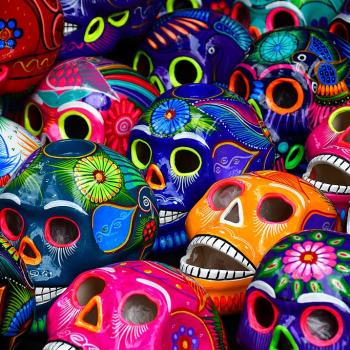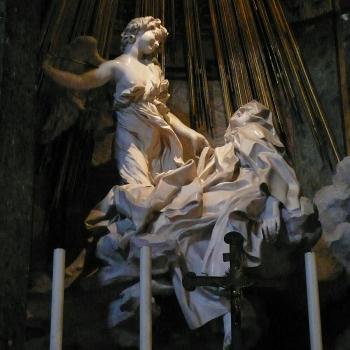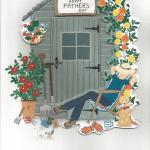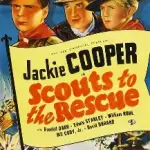Eight thoughts on Dana Gioia’s “The Catholic Writer Today.” It’s a listicle, because we live in a degenerate age.
* Look, let me get this out of my system: We all know that First Things publishes basically this same essay once a year, right? Here’s me teething on the last one I can remember. Gioia’s is the best one I’ve read so far, but I have read way too many of them, and they all have the same GIANT FRUSTRATING LACUNAE. Stop publishing this article. You’ve published Gioia’s version now and it’s quite good for its genre. It is the only one we need!
* The article’s good points are three. (Yes, a listicle within a listicle. I’m doing a great job making the case for my own aesthetic sensibility!) First, Gioia truffles up more obscure 20th-c Catholic writers than most–and even remembers that there are languages other than English. So the article serves as a nice wish list.
Second, I really liked his paragraph on characteristics of a Catholic novel. The mention of a “mystical sense of continuity between the living and the dead” actually helped me work out something about a fiction project of my own, a novel about a figure skater, which had not immediately suggested to me any need to drag in the communion of the saints. The paragraph as a whole serves as a tacit defense of the beauty and richness of Catholic faith.
And third, Gioia notes how much a community or a movement does to sustain artists. Individual genius is often less important than an overall creative, fruitful matrix. Individual genius can produce a Dali, but a movement produces the works I saw at this Surrealist exhibit. See also, maybe, my post on why the ’80s had all those one-hit wonders.
* The smallest problem with Gioia’s piece is the way it skips from high culture to pop culture depending on what’s most convenient for his argument. I don’t care about this high/pop distinction in the first place, but if you’re going to deploy it, don’t deploy it opportunistically. If Anne Rice counts on the bad side of the ledger, surely Tim Powers counts on the good.
* Why is choreography on Gioia’s list of art forms in which Catholic participation has declined? Was there a flourishing Catholic choreography movement I missed? Because I am not joking when I say that sounds amazing and I want all of it. …Also, though, why are TV, movies, and pop music conspicuous by their absence? Movies, especially, would fit his narrative reasonably well but also challenge it in certain ways.
* But here’s the giant, enormously frustrating absence in Gioia’s piece and all its ilk: There’s no acknowledgment of how completely the structure of artistic production and audience has changed since 1950. The change has been seismic.
Publishing is an especially extreme example, and it happens to be Gioia’s example, so let’s roll with it. Both making books and finding the books you want to read are totally different now. Telling a young Catholic writer to go have a career like Flannery O’Connor’s is like telling a young Catholic father to get a good stable union job at the Chrysler plant. Thanks, yeah, I’ll get right on that.
Virtually all literary culture is subculture now. The world of writers and readers has fragmented under the pressure of overwhelming variety and choice.
I don’t want to label that change “good” or “bad” overall, but it has a lot of good aspects. Publishing is going through what I think/hope is the death throes of its hyper-gatekeeping period, the “four stomachs of the cow” publishing model where you get an agent to get you a publisher to get you an audience, and each of these steps is exhausting, years-long, and nearly random. (“Simultaneous submissions not accepted. We respond within six to nine months of receipt of your manuscript.”) Small presses and self-publishing offer less of an audience than a good old-fashioned contract with HarperCollins, but then, those HarperCollins contracts themselves don’t guarantee the same broad audience and cultural influence they once did.
An article about the future of Catholic fiction which doesn’t mention small presses, self-publishing, Kindle Singles, GoodReads, and book blogs is really close to useless.
* One thing this huge change in publishing means is that in this area as in so many others, we are in an era where we need to lower our expectations and accept how little in life we control.
I had a sort of revelatory moment when I walked past a punk club and saw a great outdoor party going on, with music and dancing. I thought about all the amazing shows I went to in high school. Nobody now remembers those bands except the people who saw them play. So what? Does that make the joy and the fire of their music less valuable? All the rivers run into the sea, and the sea is never full….
Love a small audience. Maybe you’ll get a big audience, but probably not, even if you’re exceptionally good at what you do; and maybe this is an opportunity to ask why your ambition is so important to you, anyway.
* If I ran First Things–or literally anything, really, including, like, a bulletin board at a car wash–I would require that each issue include a review of some form of art which bypassed the gatekeepers. Rachel Manija Brown has a lot of reviews of self-published novels, which help sort through the huge and obvious mound of junk to find the good stuff. Since I do in fact run this blog, I am going to try to work a lot harder to find those artworks myself.
* Donna Tartt’s new novel hits almost all of Gioia’s criteria for a Catholic novel. (The exceptions: For the sacramentality of nature, substitute that of art; and the meaning of suffering is an anguished question in the book, so it isn’t presented as redemptive.) Christianity itself does not appear, but–does it have to? Anyway, I’m just going to close with the recommendation that The Goldfinch is the best thing this extraordinary (Catholic!) author has written so far.











